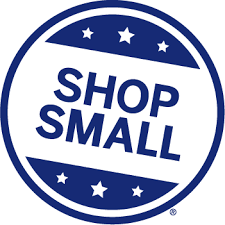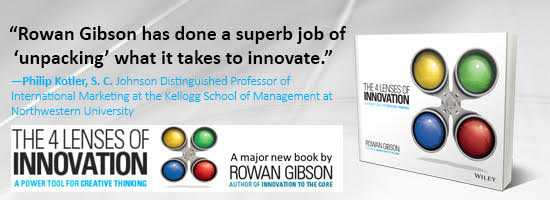The Bright (and Innovative) Future of the Mom and Pop Shop
 Right there between Black Friday and Cyber Monday resides Small Business Saturday. It’s a day dedicated for shopping at your local small business. According to American Express (the sponsor of Small Business Saturday), sales were down this year compared to 2016. This year 108 million shoppers spent $12.9 billion, compared to 112 million shoppers spending $15 billion last year.
Right there between Black Friday and Cyber Monday resides Small Business Saturday. It’s a day dedicated for shopping at your local small business. According to American Express (the sponsor of Small Business Saturday), sales were down this year compared to 2016. This year 108 million shoppers spent $12.9 billion, compared to 112 million shoppers spending $15 billion last year.
The survey further shows that the majority of small businesses visited during Small Business Saturday were food or clothing related. Much less in retail and specialty stores.
You probably saw commercials encouraging you to shop small, shop local. However, the emotion invoked is guilt. Buy small business because you should help small business. Buy local because you should help your community. Well, guilt can take you so far. $12.9 billion, to be precise, but it is declining. While Dan Ariely may claim that buyers don’t always make pure economic and rational decisions–for the most part, they do. And for that reason–supporting local small businesses because they need your support might just not be enough for them to survive, as the slumping sales numbers show.
Small businesses cannot compete with the massive logistics machines and bargaining power that Walmart, Costco, and Target have. Having a prime retail space prevents them from competing with the cost structure of online retailers, who ship out of low-rent warehouses, and may avoid sales tax for being out-of-state. Having limited space prevents them from offering the variety of specialty products that only an online retailer can offer.
But there is a future for small businesses, as long as they understand their advantage.
The main advantage that a small business has is the ability to dedicate management attention to a small, niche market. Have you ever had your foundation checked? Did you notice that all foundation repair companies use exactly the same tool called ZipLevel from a company called Technidea? Why is that?
The answer is simple. The market is too small for the large hardware equipment manufacturers. When you run a billion-dollar company, it’s hard for your top management to spend any time thinking about a market that, at best, generates $10 million a year. But what if you were a small company of 10 employees, used contractors to build parts of your product, and sold it directly over the Internet? All of a sudden a $10 million market doesn’t seem that bad, does it?
If the top executives in a billion dollar company had to deal with every little $10-million business, they would have to deal with 100 such businesses. There is simply not enough time in the day for them to do that.
You might wonder why would that be a problem, and why would the top executives have to deal with every little market. The answer is simple–because large companies don’t typically offer such autonomy to their lower-level managers. As a $100 million business unit general manager in a major semiconductor company, my expense authority was limited to $5,000. You read this right. Anything above that I would have to take up the command chain, all the way to a Senior Vice President.
So where is the future of the mom-and-pop shop?
1. Find a small enough market
This is counter-intuitive to what you ask yourself when you start a business, or look for a loan or an investment. You (and your banker or investor) ask whether the market is big enough when, in fact, you should ask if it’s small enough so that the larger players would simply not have management time for it.
2. Build a unique product or service
Using your skills and other competitive advantages you might have, build the best product or service that would serve this market. Don’t worry about the big players. They can’t focus on such small markets and will not modify their generic products for it.
I remember around 2007 a small company called LNK-tools in Belgium. They built very specialized test equipment. The market was so small, that none of the big players would compete with them. This would not be something that a Walmart sell. So they only made 2 million Euros a year. But there were only two employees in that company. I guess 2 million Euros don’t sound that bad anymore…
3. Use the Internet to distribute
Know who your customers are, and how to reach them. Highly-targeted advertising is simple and cheap these days. Sometimes all you need to do is communicate over the right Internet forums to reach your market. You don’t need a fancy storefront in a prime location. You don’t need shiny employee uniform.
And most of all–you don’t need people to buy from you because they don’t want to see you go out of business. You want them to buy from you because you are the only source of your product or service.
Wait! Before you go…
Choose how you want the latest innovation content delivered to you:
- Daily — RSS Feed — Email — Twitter — Facebook — Linkedin Today
- Weekly — Email Newsletter —
 Dr. Yoram Solomon is an inventor, creativity researcher, coach, consultant, and trainer to large companies and employees. His Ph.D. examines why people are more creative in startup companies than in mature ones. Yoram was a professor of Technology and Industry Forecasting at the Institute for Innovation and Entrepreneurship, UT Dallas School of Management; is active in regional innovation and tech transfer; and is a speaker and author on predicting technology future and identifying opportunities for market disruption. Follow @yoram
Dr. Yoram Solomon is an inventor, creativity researcher, coach, consultant, and trainer to large companies and employees. His Ph.D. examines why people are more creative in startup companies than in mature ones. Yoram was a professor of Technology and Industry Forecasting at the Institute for Innovation and Entrepreneurship, UT Dallas School of Management; is active in regional innovation and tech transfer; and is a speaker and author on predicting technology future and identifying opportunities for market disruption. Follow @yoram
NEVER MISS ANOTHER NEWSLETTER!
LATEST BLOGS
Will the iPhone Come to T-Mobile?
Lost in the noise this week was an announcement of a settlement in a legal dispute in which Sprint agreed…
Read MoreHow Charity could help spread Innovation
Every once in a while innovations come along that offer profitable opportunities for the inventors and business minds that turn…
Read More



